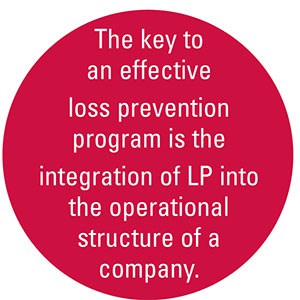Integrating an effective loss prevention program can yield dramatic improvements when it comes to mitigating inventory shrinkage. But aligning an LP department appropriately within the structure of an existing company is not an easy thing to do. It is crucial to ensure that the LP team becomes an essential component of the entire store process.
Which Stores are High-Risk?
It makes sense to target the stores with the highest amount of loss risk first in order to make the greatest impact from the beginning. When Stage Stores decided to realign its loss prevention department in the early 2000s, for example, the LP corporate manager worked with regional managers to rank stores based on shrinkage performance and its change over time.
Other attributes that were factored into the grouping evaluation included geographic location, internal and external theft history, and employee turnover rates. They eventually landed on a bundle of 50 stores that could be designated as “high-risk” and decided to focus their attentions on these stores.
Creating an Action Plan
The next step in attacking shrinkage at high-risk stores? Developing an action plan.
Action plans can be created by working one-on-one with individual store managers to identify the major inventory shrink contributors for each store. Assessments of merchandise placement and the effectiveness of the management team can also help clarify what a particular store will need.
It is a good idea to include associate interviews in official loss survey assessments. Associate interviews provide an opportunity for LP team members to educate associates about what shrinkage is, why it is important, and how they can prevent it. In return, associates can offer the corporate team a glance into the nuts and bolts of a particular store’s processes and problems.
LP Advancement
Management should also consider asking loss prevention team members to complete a certification program to advance their industry knowledge and improve their core competencies. The LPQ and LPC courses from the Loss Prevention Foundation provide a number of benefits to professionals who complete them, including:
- A strong understanding of industry best practices and retail principles
- A reinforcement of key goals and objectives
- An improved job performance and a higher level of leadership skills
Associate Awareness
In order for any loss prevention program to be successful, associates must be made aware of the necessary policies and procedures that are being implemented. Make it easy for associates to know where to report suspicious issues or potential shrinkage situations. Awareness campaigns are a great tool for this; newsletters, posters, and contests can all increase associate understanding and engagement in the program.
Compliance and Performance Audits
In your organization, what are the consequences for a failed audit? Are there any? If not, how can you expect stores to address an unacceptable performance?
During Stage Stores’ LP program implementation mentioned earlier, the team created a new position: “training and compliance coordinator.” Four individuals were chosen for this role and were responsible for training new store managers, performing operational audits, and providing additional improvement tools for struggling managers.
Equipment and Tools
Loss prevention technology tools and security equipment provide an invaluable source of support for an organization’s loss prevention program. From POS software to surveillance equipment and everything in between, your company must decide which technologies will furnish the best ROI for your investment.
A Culture of Flexibility
All these steps and tactics will contribute to a high-performing loss prevention program. But real success cannot be achieved without an organizational alignment on top priorities, a strong work ethic among team members, and a degree of flexibility for the inevitable change that comes with a growing industry.
This article was adapted from “Targeting Shrinkage with a Comprehensive Program for High-Risk Stores,” by Lee Bland. The original article was published in 2003. This adaptation was updated December 1, 2016.


